Home » Uncategorized (Page 7)
Category Archives: Uncategorized
Out of Eden Walk
For this weeks blog, I am writing about a surprisingly fun experience I had while exploring the migration of our ancestors. I have always been fascinated by other cultures and this project from National Geographic does an incredible job of giving a bit of insight into how different the world is. Paul Salopek is a award winning journalist who has decided to document his journey across 24,000 miles of human history. The amount of detail Paul Salopek and his team put into this project is astounding, with links to every map and picture so readers can learn more. The journey is laid out in a series of chapters with each one describing a different experience.
The Silk Road

The first stop I made, was the Silk Road, a topic I remember learning a lot about in high school. The first stories in this chapter describes what life is like living in Pakistan and Afghanistan. Paul describes the countries’ winding, snow covered roads and unique cuisine. I found the story about the medical benefits of sea buckthorn to be extremely interesting. This chapter was by far my favorite as it gave incredible insight into how peaceful these countries are when they are mostly attributed to war.
The Middle Kingdom

The second stop I made, was another one I was greatly looking forward to, a journey through China and Myanmar, the Middle Kingdom. Being one of the largest countries in the world, China is extremely rich in culture, with an astounding level of diversity. However, the story I was most interested in, is the places Paul was unable to visit. During his journey across Myanmar, Paul ran into logistical trouble because of the COVID-19 pandemic. He was forced to fly directly to China, and as a result, lost over 200 miles of potential stories.
The Holy Lands

The final stop I made was in the Middle East, the Holy Lands. This part of the world is considered to be one of the most unstable, making is quite risky to document. Regardless, Paul and his team were able to capture a wide variety of life from this part of the world. The Middle East is home to three of the worlds great religions as well as a massive source for petroleum, making is a restless location. However, like Pakistan, where there is human struggle, there is also incredible beauty.
I had a great experience reading about Paul Salopek’s Out of Eden Walk and I was only able to scratch the surface. Every page leads to more links where even more information can be found. This makes it a great database for a classroom. Students could spend hours clicking through links without getting bored. For a history teacher, this site is a “must have”. If you would like to learn more, you can check out the Eden Walk on National Geographic’s website, here.
Out of Eden Walk
The Out of Eden Walk is an inspiring journey taken by journalist Paul Salopek in order to trace the path of human history. A massive undertaking, Paul walked more than 24,000 miles over a decade, following the trail of human settlements around the world.

One of the main sections that I found interesting was the walk through the ‘Holy Lands.’ I choose this area because this is an area that many of us do not understand. Salopek points out, “Not an inch of this antique vista hasn’t been fought over, cursed, blessed, claimed for one divinity or another. It is a land worn smooth like a coin traded through countless fingers.” Although, a relatively small area, the three dominant monotheistic religions of our world see their origins here. We think of this place as ancient and historical, but in the “Trail Notes: Mound Cultures’ post, we see that the country is littered with piles of construction material. A step in the direction of future building, development, and modernization.

The next area of the ‘Out of Eden Walk’ that I wanted to blog about was the section on the ‘Silk Road.’ Central Asia is yet another area of the world that we do not focus on enough. The expansive grass steppes of Kazakhstan is widely acknowledged as the birthplace for horse domestication. There have been remains found suggesting horse domestication could have begun as long as 5,500 years ago. However, today the horse is no longer a part of everyday life. Sadly, as technology and urbanization have increased, most Kazakh people have no connection with horses anymore.

The final section that I wanted to discuss was contained within the “Riverlands” chapter. While in India, Paul held a four day workshop to teach slow journalism. Shikha Sharma, a local magazine editor, summed up the goal perfectly, “In the deadline-chasing media world of today, this workshop made me realize just what in-depth, honest, literary journalism can bring to the table.” This workshop focused on deeper analysis that produced social significant work. These young journalists have been empowered with the skills they need to find the truth and exposes the corruption and inequality that exists around them.
All in all, this was an interesting dive into a project that we can learn a lot from. Paul Salopek’s journey can teach us about the social and ecological issues that face real people around the world. There is more to learn from this project than can be summarized in a blog post and I hope you check it out.
Thanks for reading! If you like what you read (or don’t like what you read) let me know! @PatrickWCrowell
Out of Eden Walk
Out of Africa
The first “walk” I took was in Africa. I thought it would be interesting to view this part of the world because like many other places in the world, I don’t know much about it. In this tour I learned more about the culture of the area. I learned many things about the clothing, lifestyle, the animals and much more. There is one section of the tour that I found upsetting. One section was children walking with a tourist in Ethiopia. Some of the children which could not have been older than 13 were walking around with weapons. The caption stated that this is due to the fact that many areas are in danger from others. I also learned that having weapons is normal for the people in Ethiopia for survival. I find this to be sad because many of these traveling groups may harm others for no specific reason. Stepping away from the disturbing images I found other aspects of Africa to be very interesting. Towards the end of the milestones there were images of the boats traveling the Red Sea with one boat carrying 8,000 sheep, 855 camels and 24 humans. This was a very interesting trip to me because I learned the hardships of the people in Africa’s lifestyle along with the geography and wildlife that inhabits it.
The Middle Kingdom
Next I chose to explore the Middle Kingdom. This chapter is still in progress however, it seemed really interesting to visit. This walk takes place in China and one area I really enjoyed was the Gaoligong Mountains in Yunnan, China. This was a really beautiful place to visit as this area is home to a variety of wildlife. This region contains almost 700 species of animals and 1700 different insects. It is even said that scientists find new species of plant life every year in this location. This was very fascinating to me because I always thought China was too overpopulated and had no room for forests to exists. This was likely due to the fact that I have only seen large cities in China with efficiency housing.
The Holy Lands
The last place I decided to tour was the Holy Lands. The Holy Lands refer to the area in between the Mediterranean Sea and the Eastern Bank of the Jordan River. These lands are home to many religions like Judaism, Christianity, Islam. I assumed I would see lots of fighting over the region and one article taught me something about all the chaos. There is a wall built Bethlehem often called the “Separation Barrier”. This wall is to keep the violence to a minimum and stands at a tall 26 feet. Apparently it is large enough to be seen from a satellite. I also viewed a section named “Aftertaste” that was about the culture of the women in Nablus. Bait al Karama is where dozens of women gather in a certain structure and participate in activities. These activities include cooking and teaching others how to cook. I thought this was a very neat change of pace and taught me something new about an unfamiliar group of people.
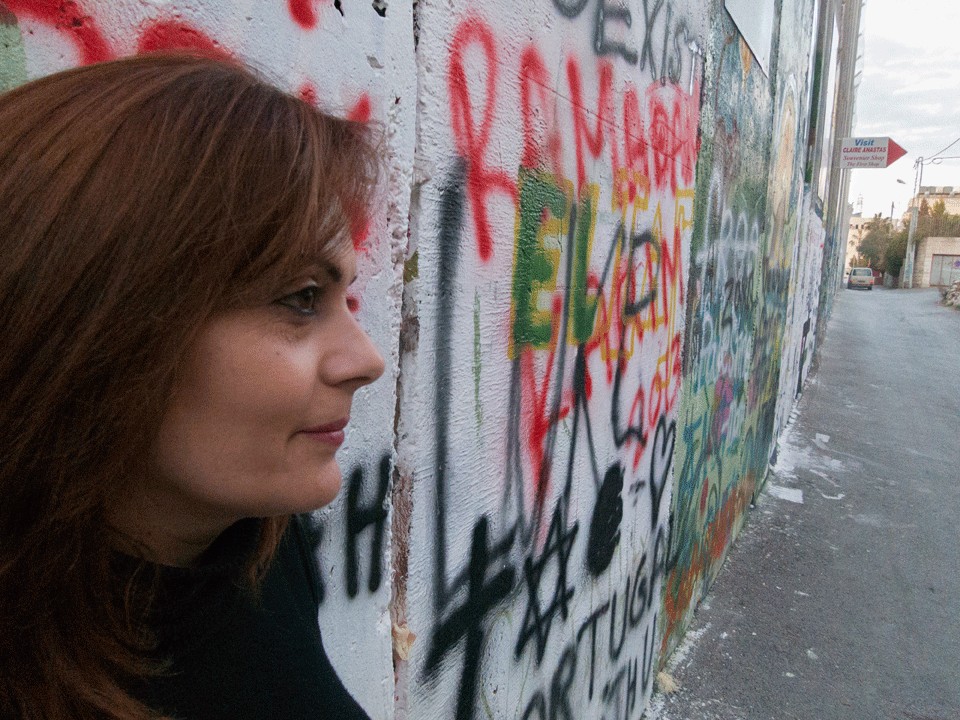
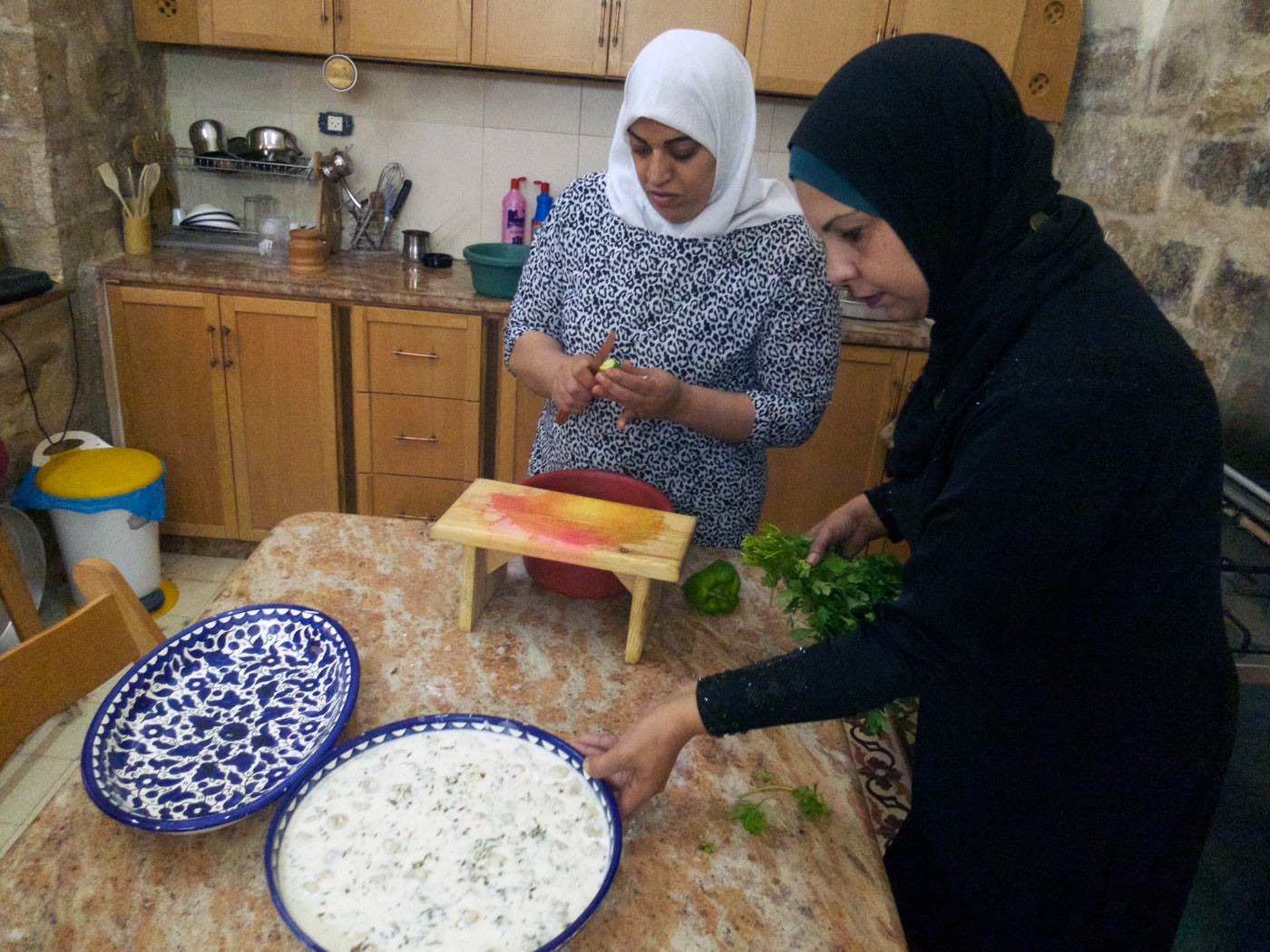
Out of Eden Walk
by Cristell Ramirez
For this blog post I dove into the website of the Out of Eden Walk. What is the Out of Eden walk? It is a journey completed by Paul Salopek. It was 24,000 miles and it took a decade long to complete. Salopek decided to walk the path of the first humans who went from Africa during the Stone Age. He covers different stories of our time which can be either climate change or tech innovation or mass migration and much more. He writes, takes videos, takes pictures and audio, whatever he can do in order to create the record of human life and he gathers all this information as told from villagers, traders, farmers, and more. He went out to rediscover our world and shared it with everyone.
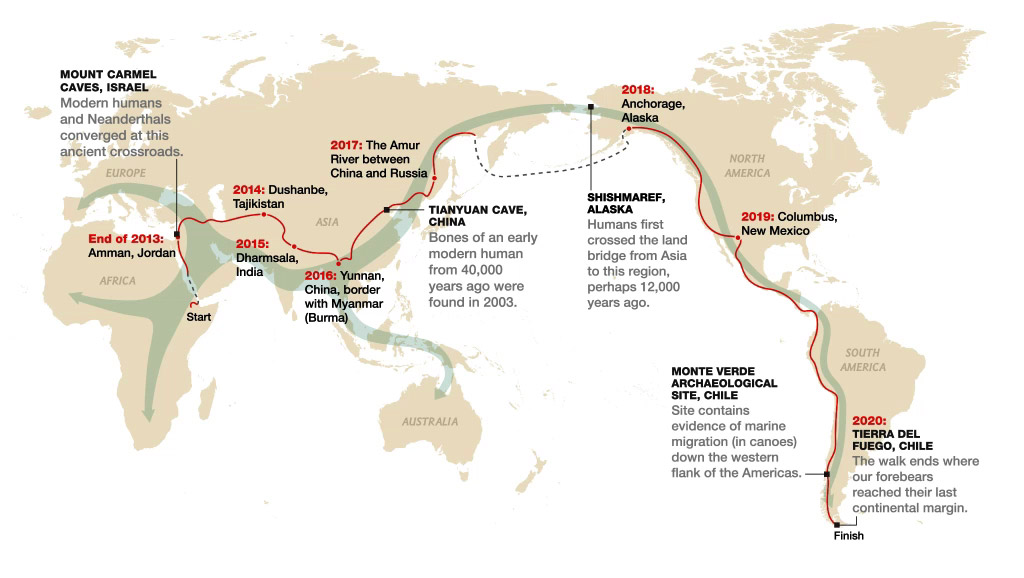
Chapter Six: Middle Kingdom
I started off by researching more into chapter six which is In Progress: Middle Kingdom. I saw an interesting post called “Crossroad of Memory.” This is a post about the time he spent in China during the COVID-19 epidemic. This was October 13th 2021 in Yusan, Yunnan China. Salopek calls China a crossroad of memory. He was used to traveling by foot and on ground and suddenly he gets on a plane to reach China.He hadn’t walked for 20 months and COVID-19 had put everything on a pause. Everything is down because of the pandemic and business is bad.
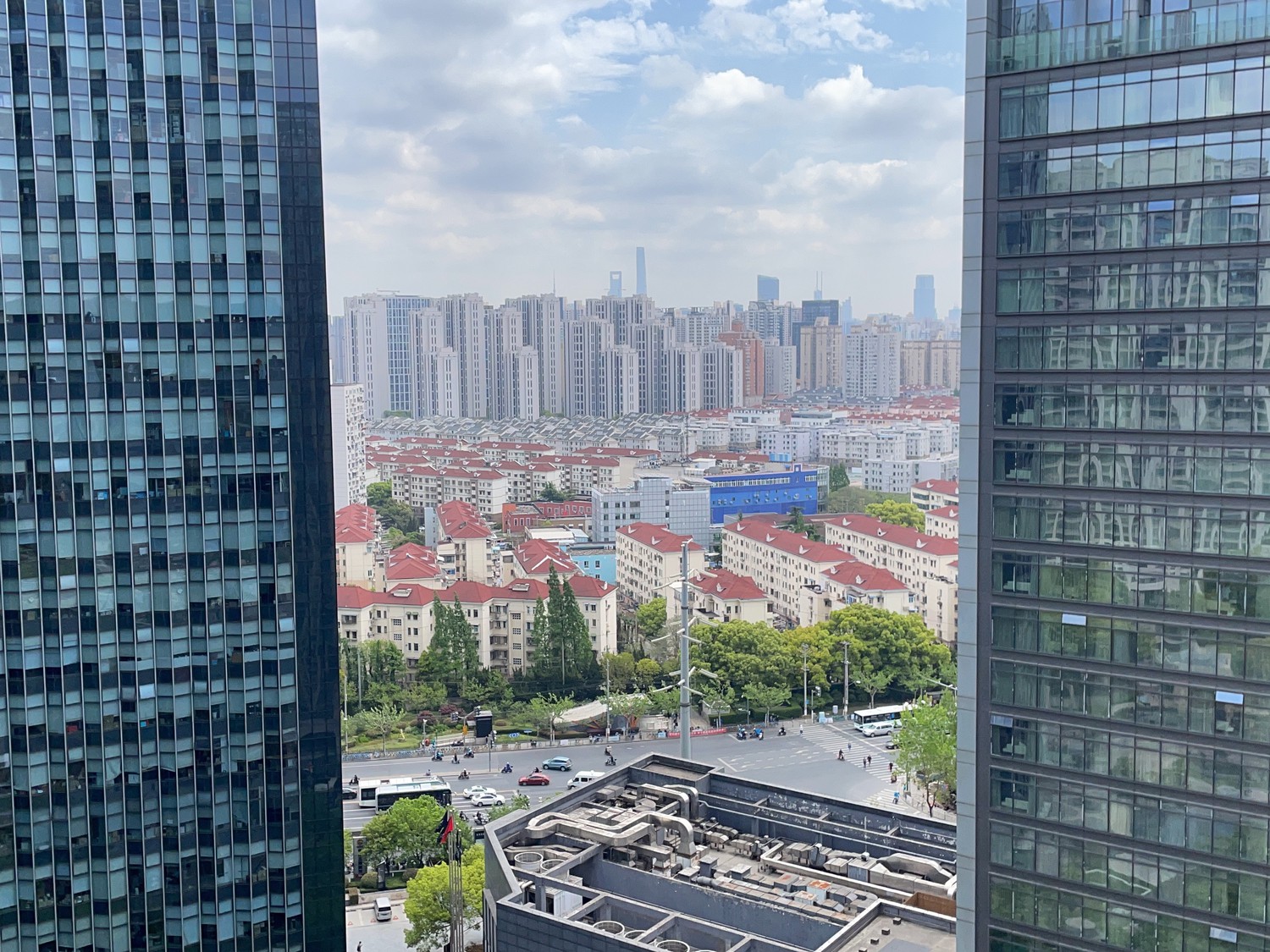
He begins his journey in Yunnan province which he calls “a crossroad within a crossroad.” Indian and Asian plates were collided in Yunnan. There are glaciated peaks and sweltering valleys with brown rivers that cut into the jungles of Asia. Yunnan contains over 19,000 higher plants and there are 2,000 vertebrate animals. And that represents the higher part of China. He follows the paths of unknown people, the hunters and gatherers who mapped the paths over 60,000 years ago. He landed in Shanghai and he was carrying no money. He couldnt buy a cup of tea, so his friend 500 miles away must use their online shopping app in order to even buy the cup of tea in the quarantine hotel. Since the pandemic is still going on, they need to quarantine for a while.
This is a video Salopek put in this article. This is the “yellow ochers of drying corn and the lipstick reds of drying chillies.” The families of the frontier town of Tengchong thresh rice. My favorite quote from this article is “All the world is a crossroad. But so is the heart.” He talks about the whole planet and how it is walking backwards into the uncertain future with new economic competition, mass migrations, and more. And he continues his journey.
Chapter 2: Holy Lands
From this chapter I read about Sami’s World. Sami Nawar is Salopek’s host. He is the director of Al Balad which is the famous historic district of Jeddah. He has over 1,000 plans for projects and he even says “Jeddah can be pronounced “jaddah”. In Arabic this means grandmother. This is the city of humanity’s grandmother.”
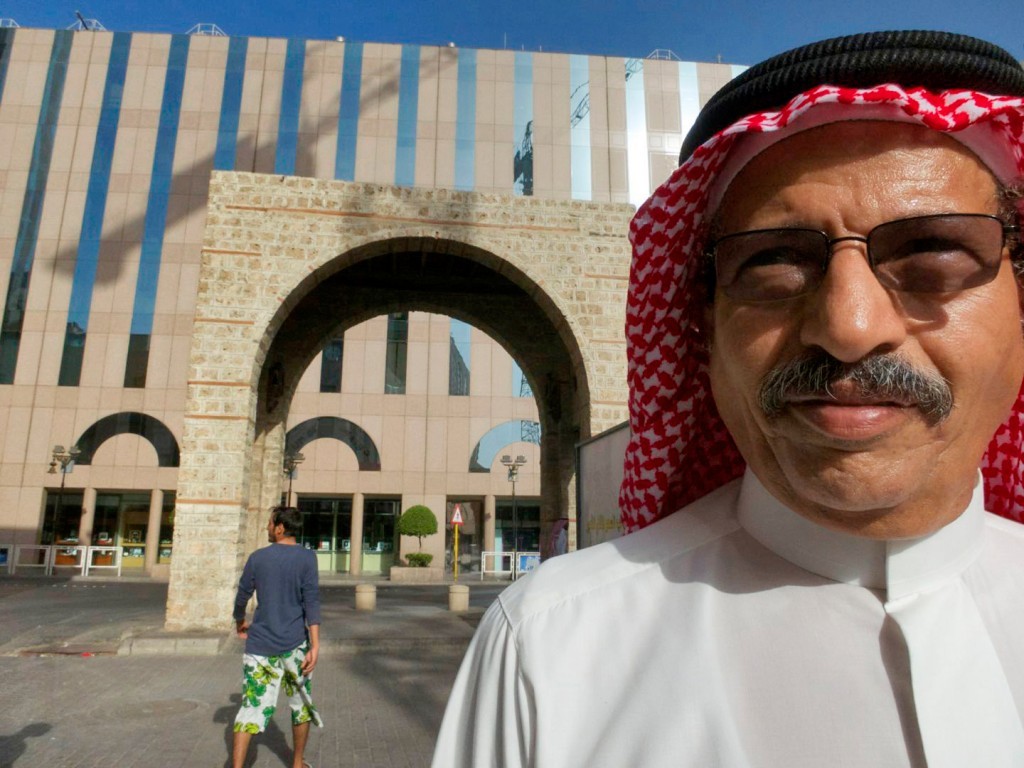
Salopek came here looking for Eve’s grave. The Koran says, Eve alighted on a mountaintop near Jeddah after Allah exiled her from Paradise for eating the forbidden fruit. There is a modern Tomb of Eve Cemetery in Old Jeddah but Salopek did not find a mausoleum or a shrine only a sterile burial ground. Other than this we learn more about Sami and his stories and how he did being a guide for Salopek.
Chapter 4: Silk Road
This chapter is about the Silk Road, on May 16th 2016 in Olanak, Kazakhstan. Salopek talks about an ancient form of mystic healing. “Amir Khan is a certified sage.” He has an office in a compound outside of Aktau. Inside the compound, Khan has his mansion, dust yard and a detachable complex with many different room. There is a tent that is like a waiting room with 200 sick unhappy people and these are Khan’s patients. They have already given up on modern medicine so they are hoping for the old practices of folk healing.
A quote from Khan, ““We pray to the ancestors. We read the Koran to them,” Khan says. “This makes them happy with us, because we remember them. They protect us.”
The mass ceremony goes like this: they gather around an ancient burial ground. They feast at a guest house while the sunsets and then they line up in the night before bonfires. They ceremonially “wash” themselves with the smoke of the sheep fat being burned. Then Khan blesses them beside the grave and then blows in their ears, eyes and heads. He then is driven back home by a driver in a SUV. He has finished his work.
Summary
I have truly enjoyed reading about the Out of Eden Walk. I was able to see different kinds of culture and the different walk that Salopek had taken. Even though I read a little out of order, I did enjoy learning so much. I will definitely be going back to learn more about the other chapters and more in depth with the chapters I already read.
Check out my twitter! @CRamirez2001
Walk of Eden
by Shelby Garrison, Garris37
In all honesty, this particular tool I probably wouldn’t be using in my own classroom, just because I wasn’t that much a fan of it. Navigating this tool wasn’t the easiest for me, and it didn’t draw me in. first place I went was Riverlands.

Even on this journey this man spread knowledge. He had workshops on journalism, I found this neat!
The next place I went was Silk Road.
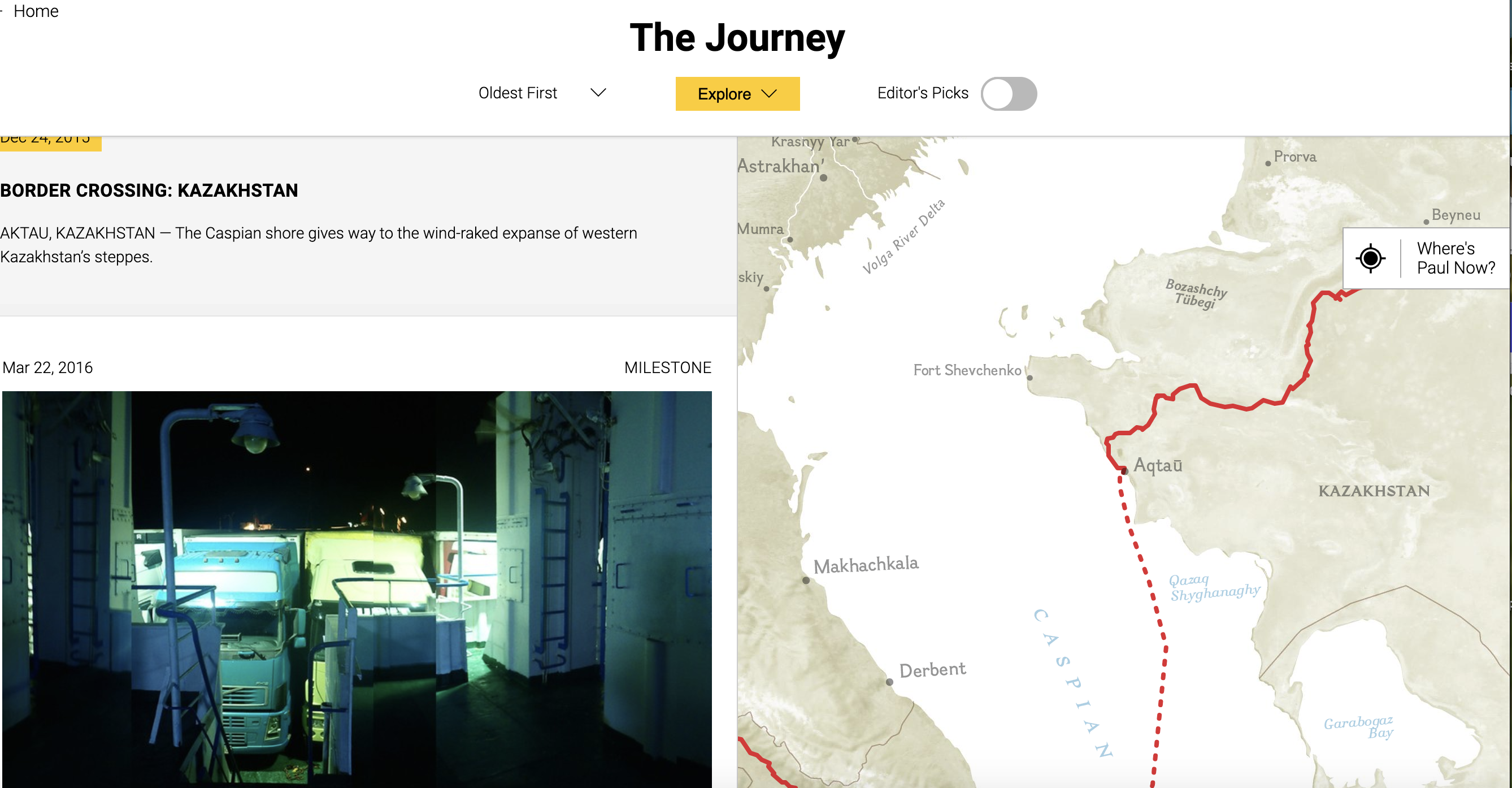
The final place I looked at was the middle kingdom.
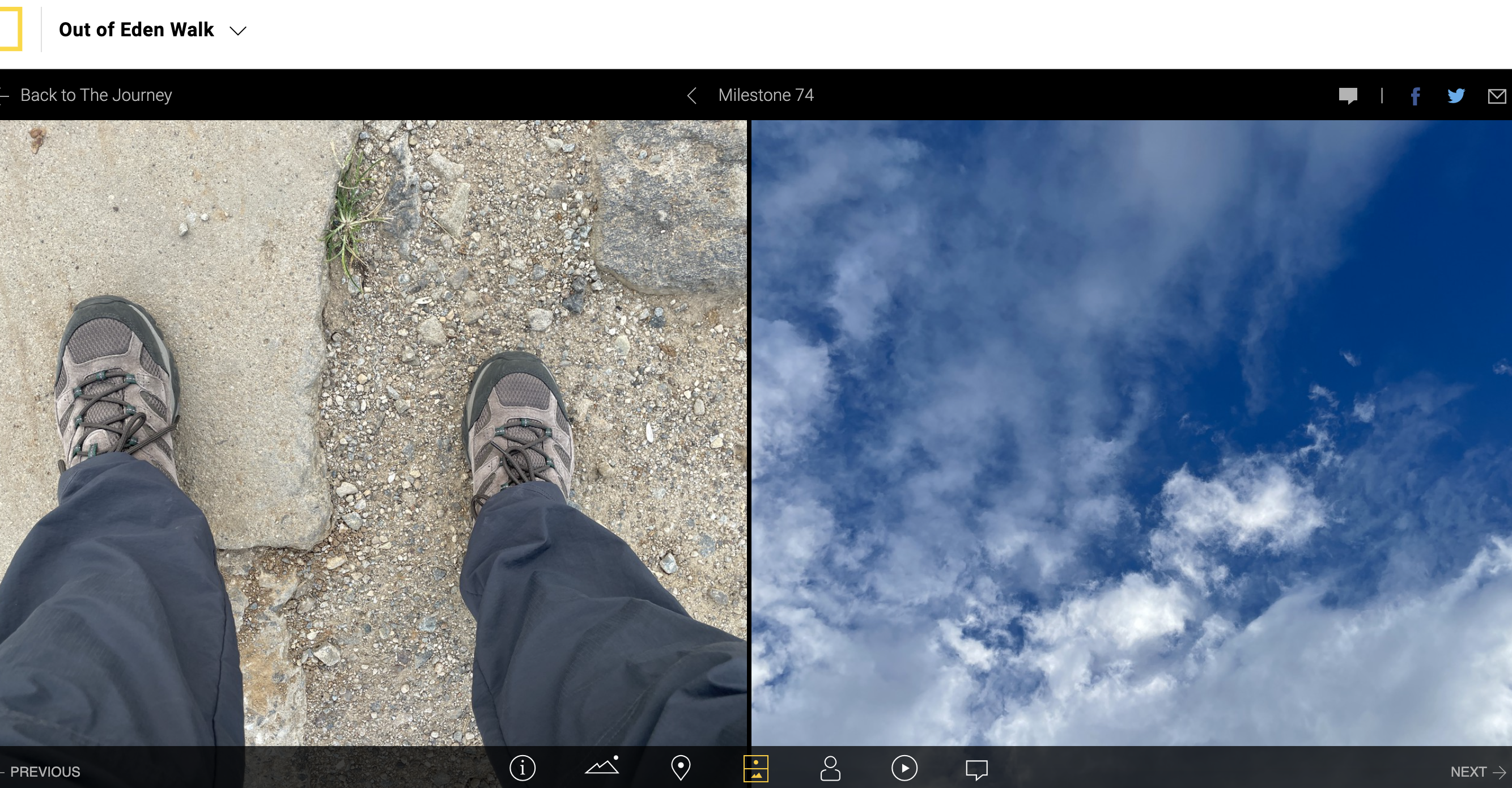
Out Of Eden Walk
This week we looked at the website that explores the history and stories of the ancestors. “Paul Salopek’s 24,000-mile odyssey is a decade-long experiment in slow journalism. Moving at the beat of his footsteps, Paul is walking the pathways of the first humans who migrated out of Africa in the Stone Age and made the Earth ours. Along the way he is covering the major stories of our time—from climate change to technological innovation, from mass migration to cultural survival—by giving voice to the people who inhabit them every day. His words, as well as his photographs, video, and audio, create a global record of human life at the start of a new millennium as told by villagers, nomads, traders, farmers, soldiers, and artists who rarely make the news. In this way, if we choose to slow down and observe carefully, we also can rediscover our world.”
The first point I looked at was the Green Ark. The Green Ark, known as the ark of life. Almost 700 species of animals, including 154 mammals, 419 birds, 21 amphibians, 56 reptiles, 49 fish, and 1,690 different insects find refuge in the mountain’s steep folds. Humans that hike on the Green Ark can see what Earth once looked like. Walking through and seeing all the wildlife and how free they are in the Green Ark.

The Second point that I looked at was Walking Alongside The Daring and Creative. The first thing said in the article is that “None of us walk the Earth Alone”. Going around different places around the world, there are always people there walking with you and experiencing the same things as you. Seeing both sides of what you see, especially when there are locals around that area, they can inform you on the past of the area. This can educate you more on the places you visit.

The final point that I viewed was Milestone 32: Dry Well. “Every hundred miles Paul Salopek pauses to record the landscape and a person he meets, assembling a global snapshot of humankind.” Finding new places around the world and can use pictures to show more about the place than words can express it. Showing the journey can help show others how other parts of the world is different or similar than your area.

Out of Eden Walk
This week we followed the story of a storyteller from 2013 when he retraced the global migration of ancestors on foot called the “Out of Eden Walk”.
“Paul Salopek’s 24,000-mile odyssey is a decade-long experiment in slow journalism. Moving at the beat of his footsteps, Paul is walking the pathways of the first humans who migrated out of Africa in the Stone Age and made the Earth ours. Along the way he is covering the major stories of our time—from climate change to technological innovation, from mass migration to cultural survival—by giving voice to the people who inhabit them every day. His words, as well as his photographs, video, and audio, create a global record of human life at the start of a new millennium as told by villagers, nomads, traders, farmers, soldiers, and artists who rarely make the news. In this way, if we choose to slow down and observe carefully, we also can rediscover our world.”
The first point that I explored on the virtual walk is NABLUS, WEST BANK.

In this stop on their journey, Paul Salopek and his crew learn what the Bait al Karama is and what they do in this place.
Bait al Karama is the “House of Dignity” where women gather each month in a stone house to teach cooking classes. They are also writing a local cookbook. They are reviving their traditional Nablusi recipes, with all the original ingredients.
Salopek and his crew stop to help and learn about the culture while eating.
The next point that I explored on the virtual walk is BEIT HANINA, EAST JERUSALEM.
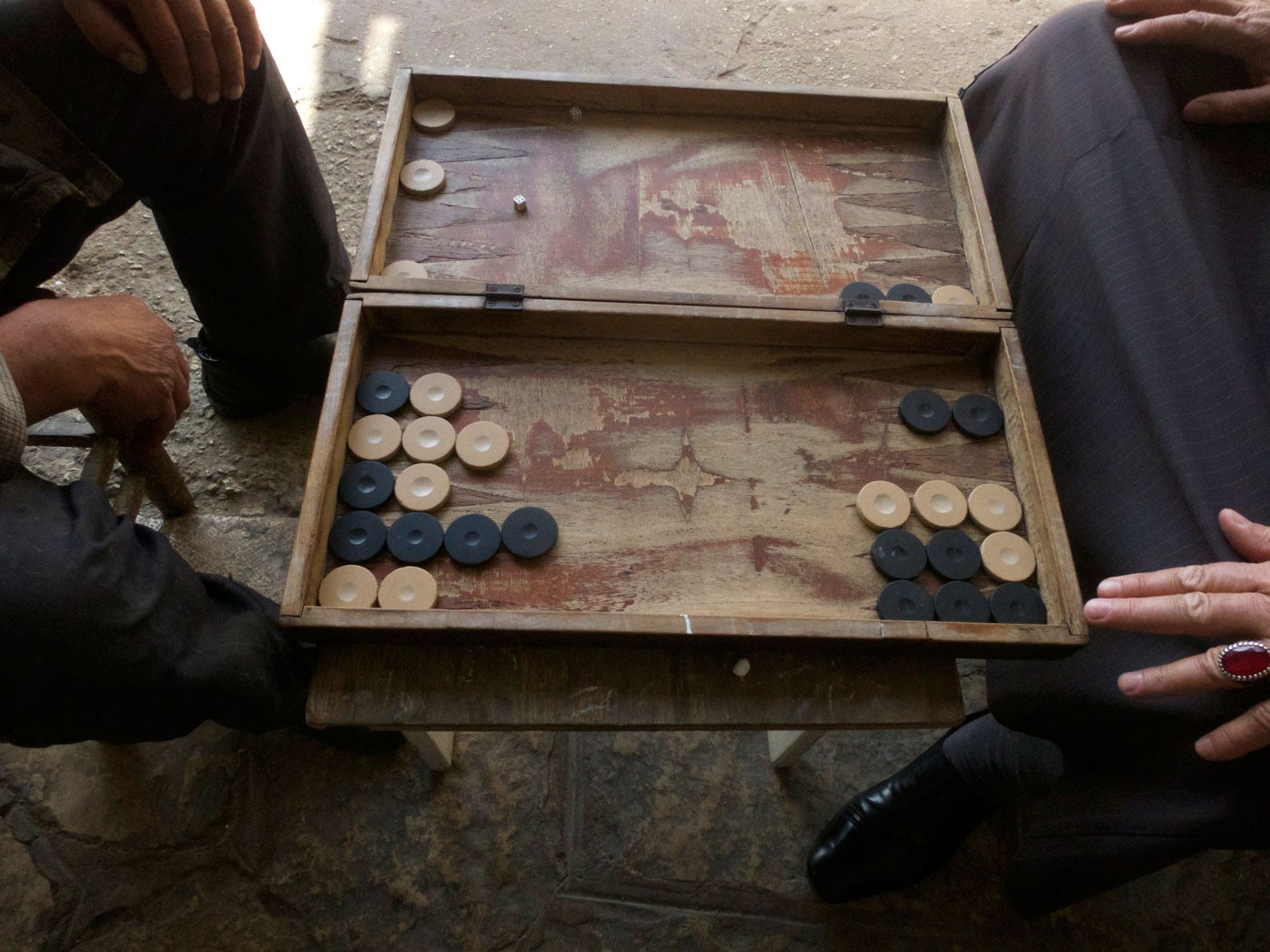
The tribal judge in this village explains to Salopek that he tries to be a mediator and solve problems for people within the community. He speaks on murders and how they work together to come up with fair and just repayment that people can agree to. I found it really interesting that people can choose not to accept this and often those people tend to retaliate with violence of their own.
‘“30,000 to 40,000 Jordanian dinars ($45,000 to $60,000)—that is a typical down payment, an advance. It varies with the sharia codes, of course. Has the victim been killed by a car? Has he been stabbed? The final amount varies with the nature of the crime. After a year, the two families must agree on the ultimate cost. 140,000 Jordanian dinars, total, is a normal amount. The killer’s family will try to get that number down, of course.”
And if the blood money is rejected?
“There are families who don’t accept it. They want revenge. It is rare. But it happens.” The judge holds up both palms in helplessness. “They will kill someone from the other side. We try to prevent this. We always ask for mercy. But if one side says no, that is their right.”’.
The last point that I explored on the virtual walk is NEAR AL QUWEIRAH, JORDAN.
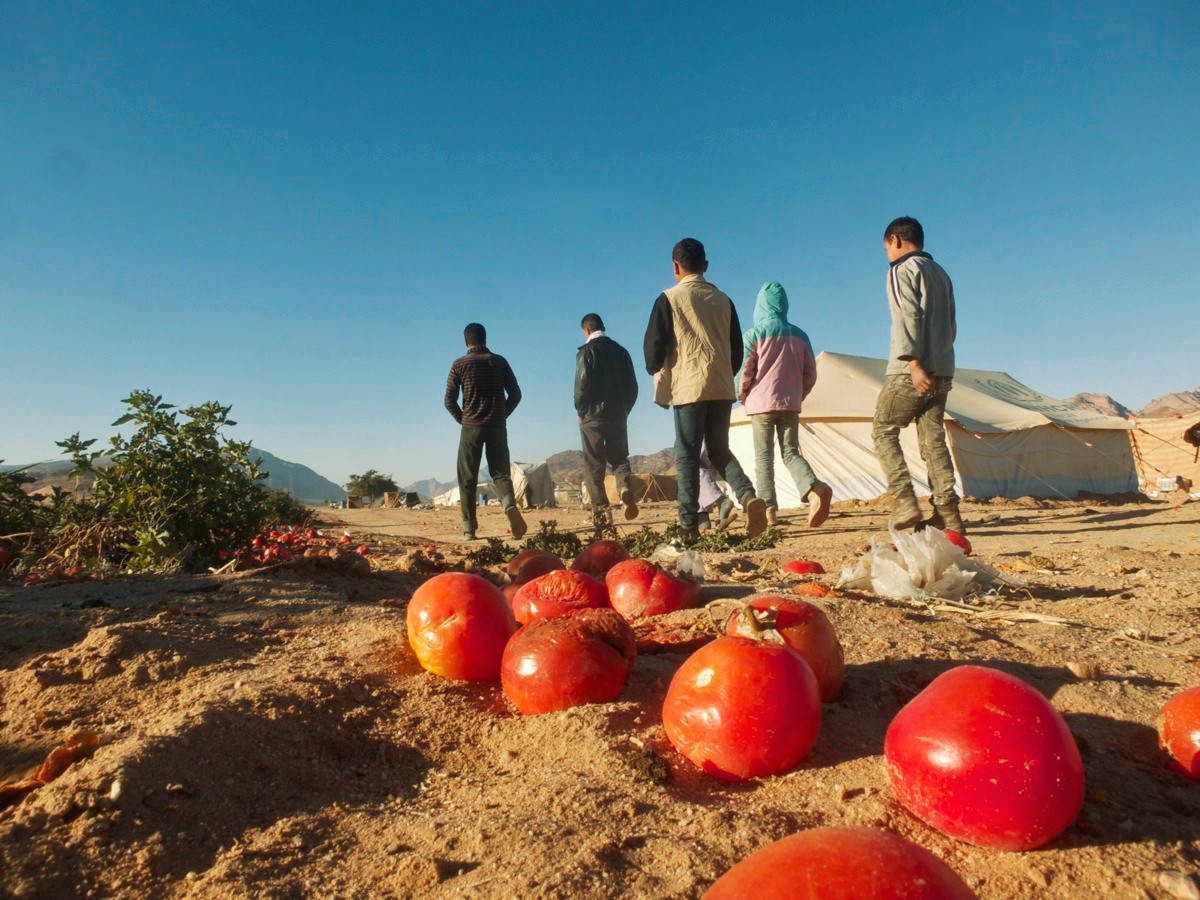
This visit gave Paul Salopek and his crew a new perspective. People in the village talked about their struggles with hunger. They don’t have meat cheese or often bread to eat. The farm for tomatoes to make money to buy food but they have very little.
“Wheat crops were torched. “We burned our family papers, our shoes, to survive the winter,” the man says. “There was no bread. We tried grass to try to stop our hunger.” Then one night he and his family—he sweeps an arm around the tent—grabbed their chance. They slipped through the siege lines and crossed into Jordan.”
Overall, I found this journey to be very interesting as you get to see Salopek meet so many different people and hear their stories and struggles from all around this voyage.
Thanks for reading!
-Carly Thompson
@CThomp2021
National Geographic: Out of Eden Walk
By: Dara Sborea
This week, we are exploring journalist Paul Salopek’s 24,000 mile journey, titled “Out of Eden Walk.” The idea was to follow the path out of Africa to other lands, just as our earliest ancestors did tens of thousands of years ago.
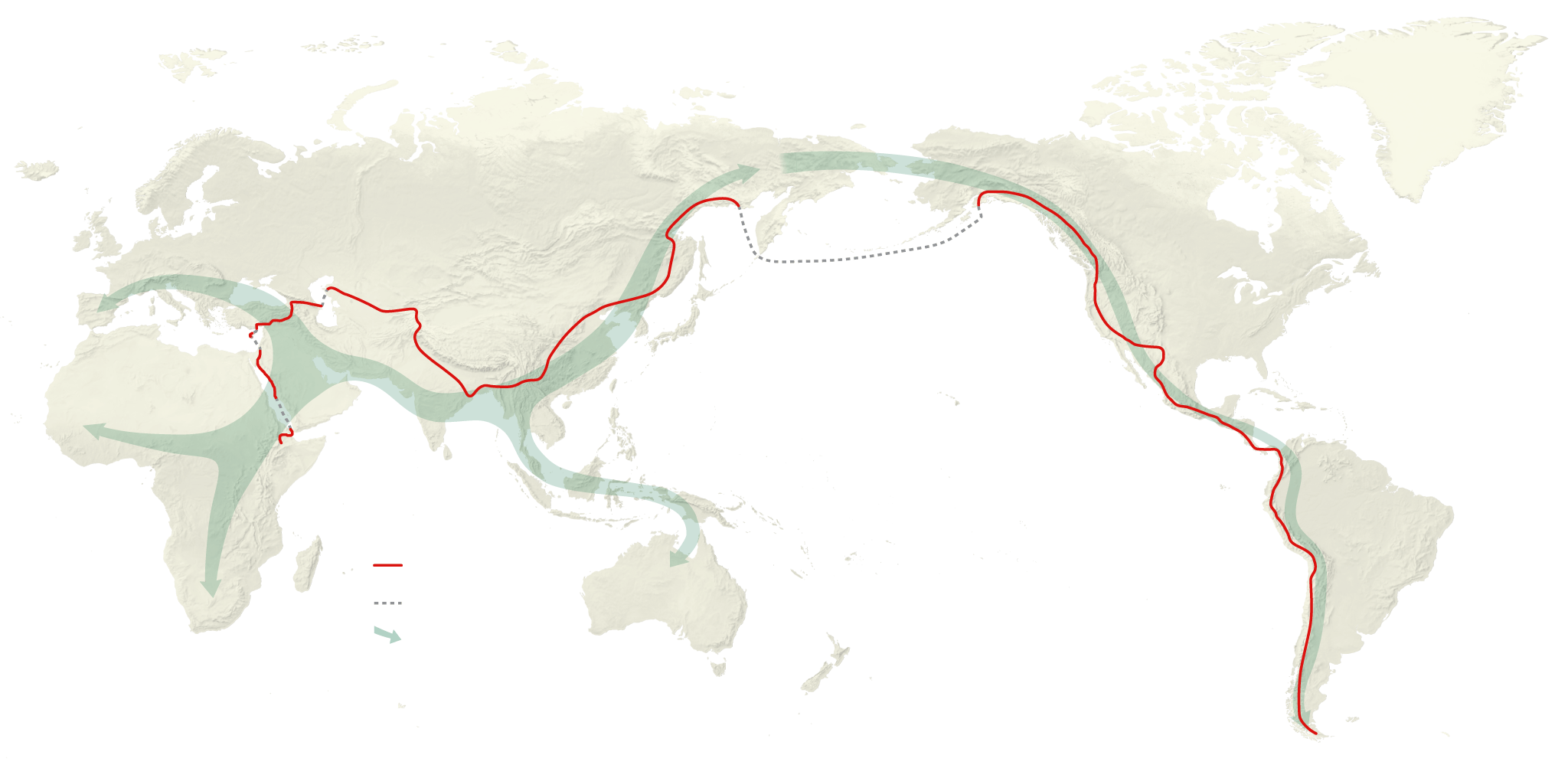
Salopek wanted to slow down so we can rediscover our world, on foot. His idea was to highlight the people and events along this journey that wouldn’t normally make the news. In this post, I will discuss three of destinations from the walk, but I highly suggest you take a look at Salopek’s journey for yourself.
Salopek begins where humankind began, in Africa. In the Great Rift Valley, which Salopek describes as an inhabited wilderness, he encounters Ahmed Alema Hessan, a leader of a clan of the Afar people. Hessan hasn’t driven camels in 30 years, but in this region, there is plenty of help as Salopek and Hessan walk and talk. Salopek describes the people who come and go along this part of the route as engaging in a public conversation, just to vanish into the horizon once their part is done.
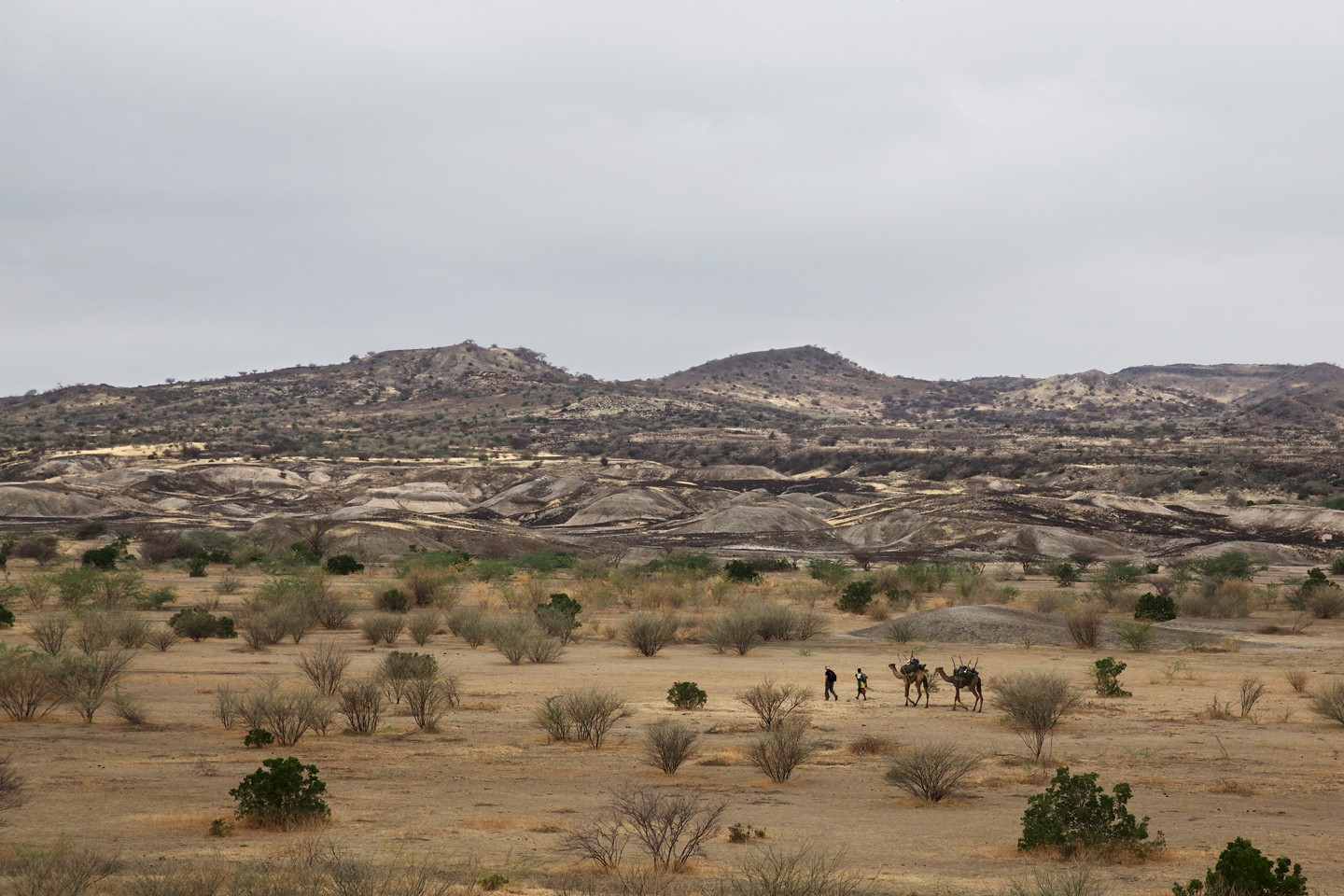
For a significant part of Salopek’s journey, he travels along the Silk Road, which was a network of trade routes that connected China and the Far East with the Middle East and Europe.
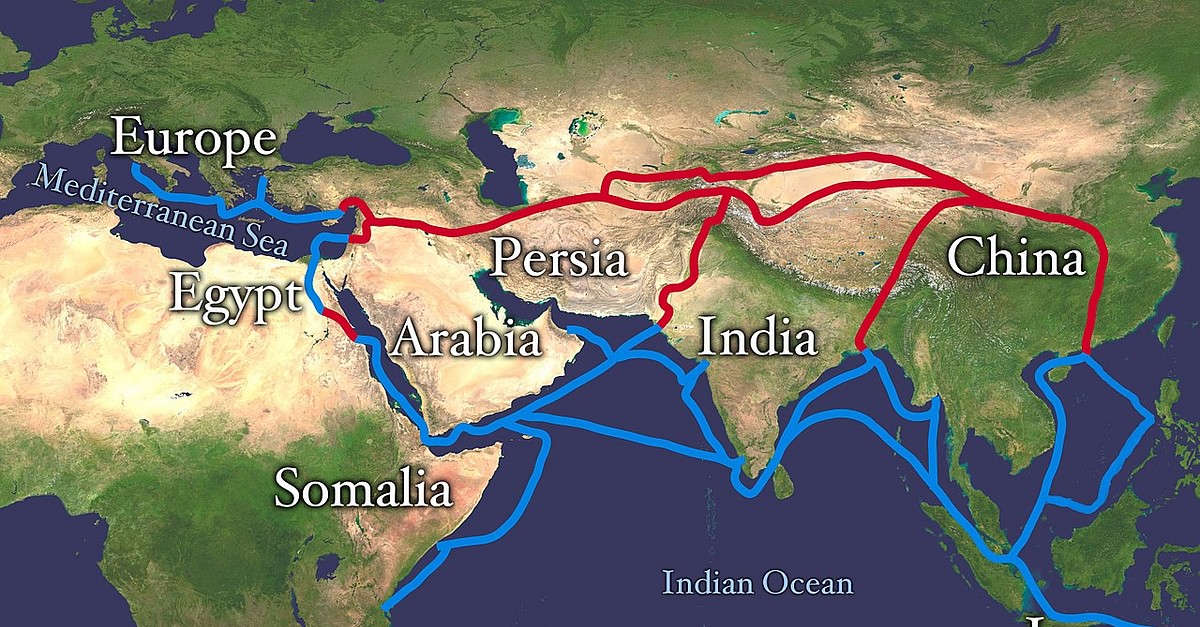
Horses were first domesticated in Kazakhstan, which means the first cowboys were there too. Salopek decides to look for a horse here to use as a pack animal. He is committed to completing his journey on foot, or by boat when required. As it turns out, while Kazakhstan’s citizens cling to their heritage with horses, few have seen or touched a live horse. Salopek does manage to find a horse breeder, and a horse is eventually delivered to him, but it’s likely not the one Salopek chose.
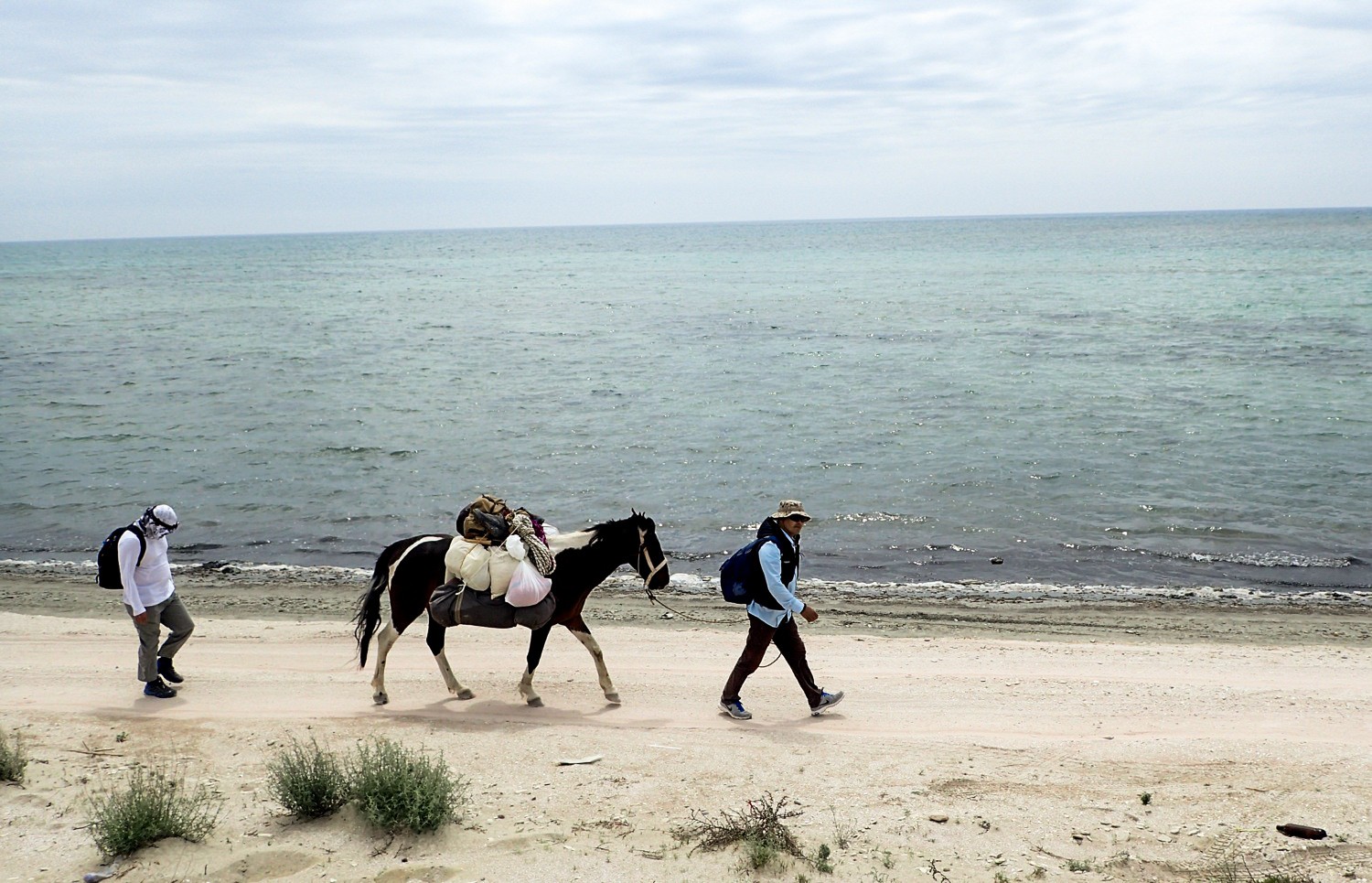
Unfortunately, Salopek’s trek was sidelined for a significant amount of time because of the Covid-19 pandemic. He has, however, resumed his journey and as of earlier this month (November 2021), he was in China’s biodiversity hotspot situated in the Gaoligong Mountains, near China’s border with Burma. To give you an idea of the massive biodiversity of the area, there are about 5,000 species of plants, 700 species of animals, and 1690 different insects! Several new plant species are discovered in the area each year. Salopek reminds us that while we were all focused on the climate change summit in Glasgow, the United Nations 15th biodiversity conference was held in China this year, and it was equally as important as the climate change summit.
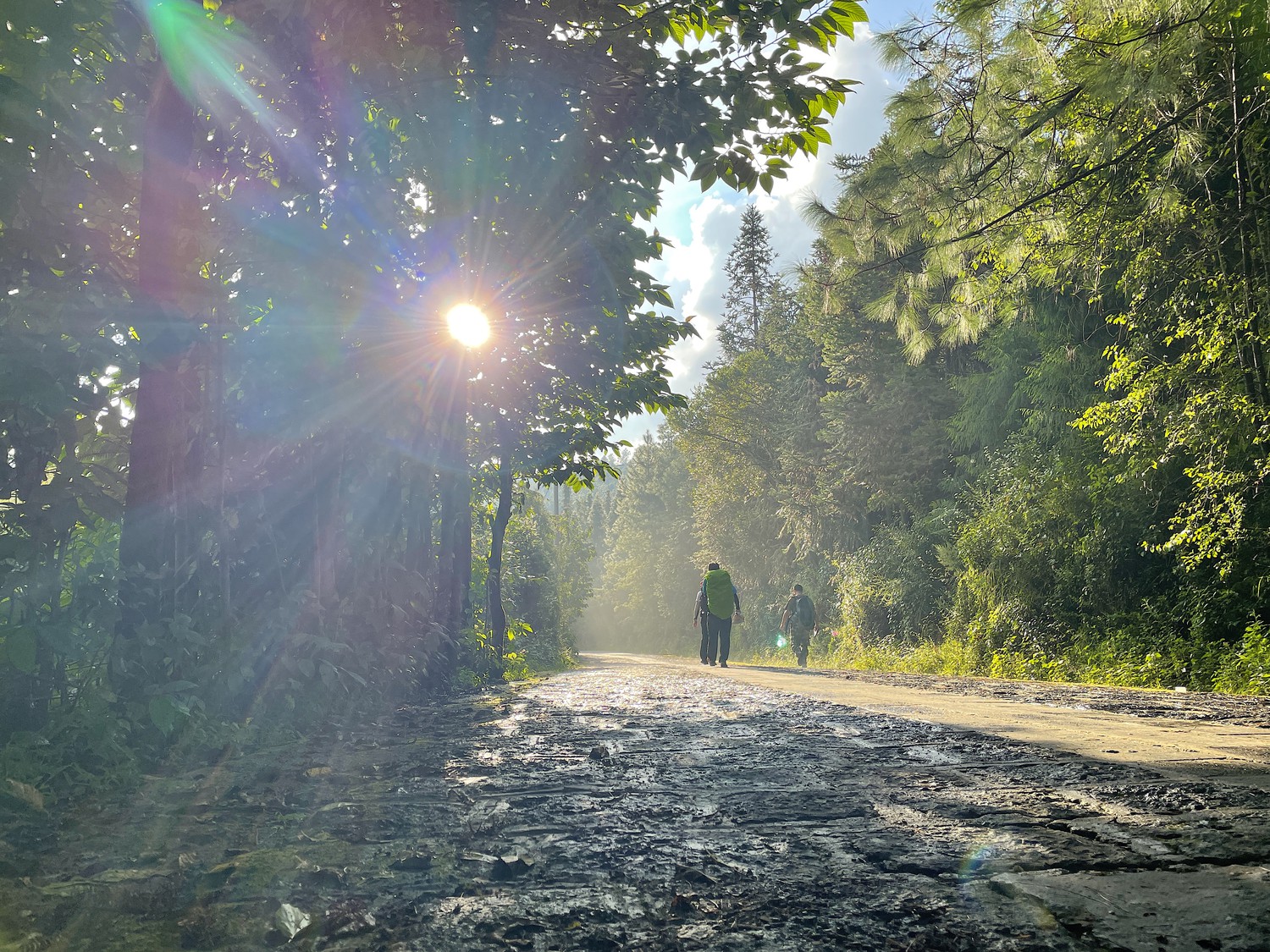
The Out of Eden Odyssey

Paul Salopek, a journalist though National Geographic, orchestrated a 24,000 mile journey of journalism. This journey, called Out of Eden, was a ten year long experience where Salopek traveled from Africa on the path of the migration of human life.
In this blog, I will be choosing three magnificent places throughout Salopek’s journey that really caught my attention- the first place being Israel, specifically Jerusalem. Jerusalem holds so much historical beauty, especially in the realm of religion. On this virtual journey, every viewer has the opportunity to take a “walking tour” of Paul Salopek’s pathway through Jerusalem and see his adventure.

The next place on Paul Salopek’s journey that caught my attention was Jordan. Jordan, like Israel, holds historical and religious significance. The specific area within Jordan that held my interest was Gohr Al Safi. This location is featured in the article Shards. Gohr Al Safi is home to the ruins of the Christian Monastery that belonged to Lot, a righteous man of God. This monastery is located at the lowest point of the world: 1,378 feet below sea level. The article shares that there are many mosaic restorers that spend their days trying to piece back together the monastery. This is amazing because it shows that there are people that deeply care about the historical and religious significance of this place and that they hold it in high esteem.

Faridcot, Punjab, India was my third place of interest. The article, Walking Through a Youthful Exodus in India, brings up a very intense issue in rural India- the need for escapism. To my surprise, Salopek shares that most drug abuse in India is in rural communities and that 70 percent of drug abusers come from rural backgrounds. That is certainly not the case in America, as the opioid epidemic is rampant within urban areas and less prominent (but still very existent) in rural communities. Drug abuse is not the only form of escapism that plagues the people of Punjab, the dire yearning to literally escape and leave their country is a relevant form of escapism as well. Tens of students every day would approach Salopek to practice their English skills. This English skills need to be proficient in order for these students to gain visa access and emigrate. This article was very interesting, but it is always disheartening to hear of devastating living conditions and what people in those areas need to do/ feel the need to do in order to escape and be free.

This Out of Eden experience was very informative and incredible. It is always important to be aware of the things that are going on around the world, for these nations, though they are far, are homes to our brothers and sisters. The Out of Eden walk speaks light into culture, social issues, history, and so much more. Check it out for yourself, it is worth it.
Diane Hoffman
Blog Post 5: Communicators
by Cristell Ramirez
When reading chapter 2 of Sail the & C’s, I learned about a lot of different tools and the importance of communication. Communication is key to everything in my opinion. Especially as educators, being able to communicate is one of the most important aspects of teaching. Being able to communicate with your students is important along with them being able to communicate with us. There sometimes can be language barriers and we need to learn/teach our students to communicate us. Personally I feel like every student should have the access to this tool and or any translator tool. I understand what it feels like to have a language barrier and not understand what is going on because of it so having this is essential to me.
Microsoft translator is a tool in which you can have live captioning and translation in the classroom. Schools are becoming more and more diverse. There can be students who don’t speak English and their families can’t speak it either. Being able to communicate with the family of your students is also essential since you want the family of the student to be in the known of what they are learning in school. Not just there being a language barrier that this tool can be used for, it can also be used with students who are hard of hearing. Since it has a live captioning option, it can be used for the student to read the lesson and still get all the information.
Microsoft translator can be used for many different situations. As you can see you can use the live translator. If you are having a conversation with someone who speaks another language you can translate in the moment and it even speaks for you. In an education setting, you can use this with students or with the family of them to translate in real time or even give you captions. It can be used for presentations/lectures and it can be used during work groups. Here’s a little video on how to use translator in school.
Information from: https://www.microsoft.com/en-us/translator/education/
Check out my twitter! @ CristellR2001



Recent Comments